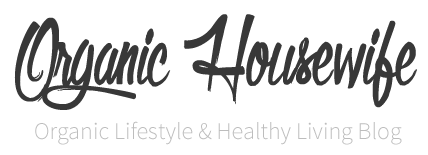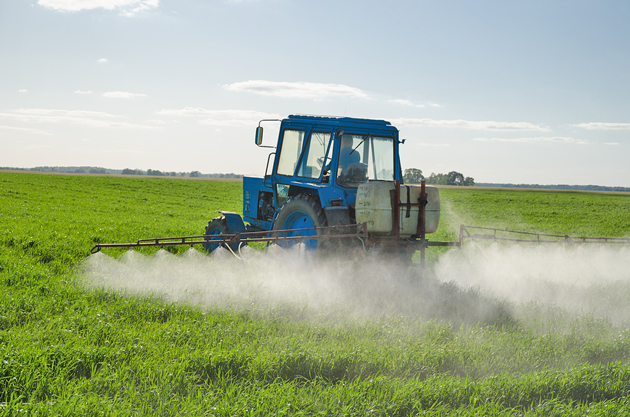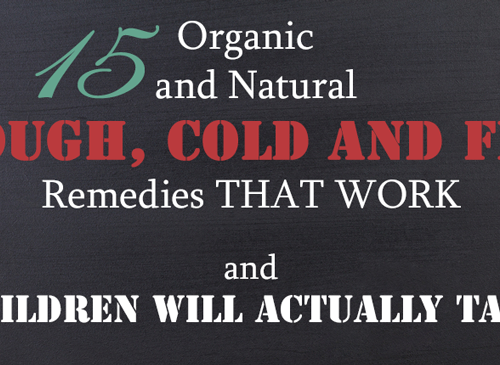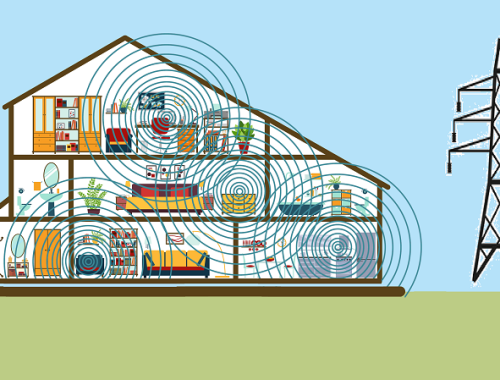A few weeks ago I took my son to a classmate’s birthday party. They had the most gorgeous cake – a cosmos theme. Rich navy blue universe with realistic red Mars, brown Jupiter, green Uranus, blue Neptune; the moon, the sun and even a beige Saturn with its belts. The most beautiful cake I have ever seen. Truly.
That morning, before the party, I was at home baking cupcakes. With some delicious homemade frosting on top, I placed them into a to-go container so I could ask to substitute for the “blue” cake. Well, several hours later, turned out I was right. That cake was very blue…
I am often met with raised eyebrows. Most people do not think about what they are eating. We all know organic is better, but just how much? Turns out quite a bit.
So what exactly is in conventional food? Prepare to be shocked.
Processed foods:
This is a short list, for a more comprehensive list click here.
Preservatives – increase shelf life. Linked to anything from hyperactivity in children, neurological disorders to cancer. Sodium benzoate, benzoic acid, calcium propionate, sodium erythorbate, sodium nitrite, calcium sorbate, potassium sorbate, propyl gallate, sulfur dioxide, bisulfite, TBHQ, BHA, BHT, EDTA, tocopherols (Vitamin E). Citric acid and Acorbic acid from GM corn.
Flavor enhancers – these do just that, chemically enhance flavor for crappy tasting food. Allows a manufacturer to create stronger flavor from fewer ingredients. Highly toxic, addictive, linked to obesity; “banned in infant foods in Australia, New Zealand and America because they are known to cause severe damage to the brain and nervous system” (source). Monosodium glutamate (MSG), hydrolyzed soy protein, hydrolyzed vegetable protein, autolyzed yeast extract, carrageenan, disodium guanylate or inosinate.
Food colorings/dyes – potentially carcinogenic, linked to allergic reactions, hyperactivity in children, and a variety of tumors. Blue 1 and 2, Green 3, Red 2, 3 and 40, Yellow 5 and 6, Orange B, Citrus Red 1 and 2, Brown HT, Orange B, Bixin, Norbixin, Annatoo, caramel color. Or simply “color added”.
Fat replacers – a “fat” that prevents fat from being absorbed in your digestive system; it also prevents you from absorbing fat-soluble nutrients from fruits and vegetables. Olestra, cellulose gel, carrageenan, polydextrose, modified food starch, microparticulated egg white protein, guar gum, xanthan gum, whey protein concentrate
Artificial sweeteners – Sugar is bad, period. Artificial sugar is worse. These are linked to a variety of cancers, stomach problems, diabetes, arthritis, heart problems, etc. Saccharin, Aspartame, High Fructose Corn Syrup, Acesulfame potassium, Sucralose, Mannitol, Agave nectar, Bleached starch, Tert butylhydroquinone.
Synthetic vitamins – added to junk food or food that has been so processed it is completely depleted of any nutritional value, so manufacturers “add” it back in. Problem is there is no daily recommended value, and if one takes a multi-vitamin, then eats synthetically fortified foods, there is a good chance they may get too much. A recent article talks about too much synthetic folic acid (not natural folate) and B12 during pregnancy can actually lead to autism.
Artificial flavors – “have an inedible source, which means you can be eating anything from petroleum to paper pulp that are processed to create the chemicals of flavorings. For example, “Japanese researcher Mayu Yamamoto discovered a way to extract vanillin (the compound responsible for the smell and flavor of vanilla) from cow poop in 2006.”(source) Natural flavors, although derived from natural sources are not much better.
Emulsifiers – improve texture and shelf life. Prevents oil/other liquids from separating. “Dietary emulsifiers impact the mouse gut microbiota promoting colitis and metabolic syndrome.”(source) BVO (brominated vegetable oil), carboxymethylcellulose, polysorbate 80, lecithin, carrageenan, polyglycerols, xanthan gum and other “gums”. Modified Food Starch.
Stabilizers and thickeners – added for uniform texture . Linked to an array of conditions such as cancers, ulcers, digestive issues and even birth defects. Potassium Bromate (banned in other countries), carrageenan, alginic acid. Gums: arabic, furcelleran, ghatti, guar, karaya, locust bean, tragacanth and xanthan.
Binders and fillers – binding agents are in a good portion of processed foods and especially in supplements. Linked to Chron’s disease, ulcerative colitis, Irritable Bowel Syndrome and others. Maltodextrin, Microcrystalline Cellulose, Titanium Dioxide, Soy Lecithin
Texturizers – correct the food’s texture and give it consistency that consumers expect. Sodium Phosphate, Carageenan, Maltodextrin, Alginate, xanthan and guar gums.
Anti-caking agents – absorb moisture and prevent powdered substances from clumping and sticking to each other. Talcum powder, silicon dioxide, magnesium stearate, potassium aluminum silicate, aluminium silicate, stearic acid, polydimethylsiloxane.
Glazing agents – food coating. Used for preservation from water; added to create stability under pressure or heat, a uniform protective coating, added color, etc. Stearic acid, shellac, crystalline wax, lanolin, paraffin and others.
Humectants – add and retain moisture. Propylene glycol, hexylene glycol, and butylene glycol, Glyceryl triacetate, Neoagarobiose, Polymeric polyols such as polydextrose, Quillaia, Urea.
Acidity regulators – added to change or maintain acidity. Citric, acetic and lactic acids. Others include adipic acid, ammonium adipate, succinic acid, sodium fomarate and others.
Dough strengtheners and conditioners – produce more consistent, stable dough. “Dough conditioners can improve dough handling, gas formation and retention, loaf volume, crumb structure and texture, crust development and color, general appearance, sliceability of the baked product, etc. They are also known as a ‘dough strengthener,’ ‘bread improver’ or just ‘improver.”(source) Chlorine, Ammonium sulfate, azodicarbonamide, L-cysteine, calcium bromate (banned in European Union and Canada), potassium bromate (banned in European Union, Canada, China, Nigeria, Brazil, South Korea, Sri Lanka, Peru and others).
Firming agents – strengthen structure of the food, keeping it firm and/or crisp. Aluminum Sulphate, Ammonium Aluminum Sulphate, Calcium Chloride, Calcium Citrate, Calcium Gluconate, Calcium Lactate, Calcium Phosphate, Calcium Sulphate, Potassium Aluminum Sulphate, Sodium Aluminum Sulphate.
The list doesn’t end here. It goes on with things like Transglutaminase – “meat glue” Beef, poultry dairy, seafood, and other protein-rich products. You’ll never see this ingredient listed on food labels. …What it does is enable a chef to “glue” together a bunch of scraps of meat and sell it as a steak, bind bacon to meat, improve the texture of cheese, and do other tricks. (source) And Canthaxanthin and/or astaxanthin – added to farmed salmon so it appears pink (farmed salmon meat is actually white). There are many others; remember the title of this section – “very briefly” – well, this is a very brief summary.
Fresh foods:
The use of the following is linked to the worst health problems. The list begins with hormone disruption, antibiotic-resistance, allergies, and ends with every cancer known to man.
Steroidal Hormones – increase the animal’s growth rate, produce larger quantities of leaner meat with less feed. Growth hormones are used in a form of an implant that dissolves slowly over 100-120 day period; these “implants will improve growth rate from 10 to 20 percent and decrease the cost of beef production by 5 to 10 percent.”(source) Dairy cows injected with rBGH every two weeks, produce 10 – 20 percent more milk. rBGH is banned in Europe and Canada.
Antibiotics – 80% of all antibiotics sold in the US are used on livestock. “Small doses of antibiotics administered daily would make most animals gain as much as 3 percent more weight than they otherwise would. In an industry where profits are measured in pennies per animal, such weight gain was revolutionary.”(source) They call them “sub-therapeutic” doses – given to a perfectly healthy animal for sole purpose of gaining weight. This “sub-therapeutic” use is banned in European Union and Canada, in United States however it is a common practice. “If a group of animals is treated with a certain antibiotic over time, the bacteria living in those animals will become resistant to that drug. According to microbiologist Dr. Glenn Morris, the problem for humans is that if a person ingests the resistant bacteria via improperly cooked meat and becomes ill, he or she may not respond to antibiotic treatment.”(source) Some antibiotics are given to animals right before slaughterhouse so we get a dose as well. “87 percent of store-bought meat collected by federal scientists in the most recent round of tests was contaminated with both normal and antibiotic-resistant Enterococcus bacteria.”(source) We have created super-bugs, it is frightening. National Geographic is saying, that the last antibiotic type is beginning to fail. Can you imagine going to the hospital with a simple infection that should be cleared up in 7 days with antibiotics, and you are told the antibiotics no longer work. We are close to that being a reality.
Genetically Modified Organisms – “living organisms whose genetic material has been artificially manipulated in a laboratory through genetic engineering, or GE. This relatively new science creates unstable combinations of plant, animal, bacteria and viral genes that do not occur in nature or through traditional crossbreeding methods.”(source) GMOs are very new and have not been adequately studied. Genetic Roulette is an excellent eye-opening documentary if you are not familiar with the issue. There are three main types.
- Bt Toxin – Corn, soy, cotton. Constantly produce an insecticide. A bug eats it and the Bt toxin breaks open its stomach so it dies. Genetically modified corn as an example is also recorded with EPA as a REGISTERED pesticide. Every single cell of the plant has this pesticide built-in; there is no way to wash it off and it does not degrade.
- Roundup Ready – the crop is genetically modified to withstand Roundup. Meaning when the field is sprayed, everything dies except that crop. Everything – weeds, bugs, good bacteria in the soil… It is soaked into the plant and does not wash off (kind of like putting white daisy into a cup of blue water – petals will turn blue; only in this case, a vegetable is full of Roundup)
- Desired Trait GMO – these crops are genetically modified for a desired trait. For example, golden rice – genetically engineered to produce beta-carotene, precursor to vitamin A or SDA Omega 3 soybeans – soybeans that include stearidonic acid (found in fish) that is not normally found in soybeans.
Pesticides –Depending on crop and approved label use, can be applied before and after harvest. USDA tested pesticide residues on fruits and vegetables in 2014. Results are alarming, they detected the following number of pesticide residues: Apples – 18 pesticides, Celery – 18 pesticides, Blueberries – 16 pesticides, Green beans – 10 pesticides, strawberries – 32 pesticides, Tomatoes – 28 pesticides. (Full Report, page 218) Some pesticides are so toxic, they can induce late-term miscarriages and damage developing fetuses in laboratory animals. These are potent carcinogens and neurotoxins sprayed on our food and fields. We feed these to our children. There are several types of pesticides
Fungicides – Kill fungal pathogens. Applied to growing plants or directly to fruits, vegetables, tubers and seeds post-harvest to prevent spoilage due to fungus. “Since these curative fungicides must be able to penetrate into plants and selectively kill the invading fungi, they are designed to target specific enzymes or proteins made by fungi.” (source) Fungicides are applied to seeds, bulbs, roots, soil, foliage, greenhouse air, via injection and finally, harvested produce as a dip or spray in the packing house.(source)
Herbicides – used to kill unwanted plants. Herbicides vary in toxicity; some are lethal at very low doses (Dinosep). The most frequent application of herbicides occurs in row-crop farming, where they are applied before or during planting to maximize crop productivity by minimizing other vegetation. They also may be applied to crops in the fall, to improve harvesting. “Common wheat harvest protocol in the United States is to drench the wheat fields with Roundup several days before the combine harvesters work through the fields as the practice allows for an earlier, easier and bigger harvest“(source). But not just wheat, feed barley, tame oats, canola, flax, peas, lentils, soybeans and dry beans are harvested using the same technique. (source) The most common and known herbicide is probably Glyphosate. It replaces glycine, a neurotransmitter, in our bodies and wreaks havoc on human physiology. Classified as a ‘probable carcinogen’ it has been found to “drive breast cancer cell proliferation in the parts-per-trillion range”. It is widely used and at this point contaminates soil, drinking water and humans.
Insecticides – formulated to kill, harm, repel or mitigate one or more species of insect. Insecticides work in different ways. Some insecticides disrupt the nervous system, whereas others may damage their exoskeletons, repel them or control them by some other means.(source) More here.
Rodenticides – These are chemicals used specifically for controlling rodents such as mice and rats. http://www.epa.nsw.gov.au/pesticides/pestwhatrhow.htm
Bactericides – destroy, suppress or prevent the spread of bacteria.
Lures – chemicals that attract a pest to a pesticide for the purpose of its destruction.
Some pesticides are residual in action and continue to be effective for days, weeks or months after their application. Examples are the triazine herbicides that persist in the soil and kill emerging weeds over the lifetime of a crop and some insecticides that remain active in the soil for several years when used as a chemical barrier to termites entering buildings. Another is a sprout inhibitor, certain ones applied after harvest may remain active up to 6 months’ post-use.
Conclusions
Some of the above mentioned are worse than others. All, according to the government, “appear to be safe” but are they really? My favorite response:
“Absence of evidence is not evidence of absence”
Studies are often manipulated and there are numerous loopholes, for example, “the food additive industry is allowed to designate a substance as GRAS (generally regarded as safe) without even notifying the agency, relying instead on “expert panels.” Or steroid safety studies declaring steroid use is safe based on estrogen levels of pregnant cows to estrogen levels of steroid-injected cows at time of slaughter. Should the scientists eliminate the pregnant cows from their studies, the results will indicate that cows implanted with steroids will have significantly higher estrogen in their bodies than cows without implants. Any study can be manipulated to include or exclude certain data yielding desired ‘results’. Always look for who is funding the study.
None of these chemicals are studied adequately and especially when mixed together. For example, “Fungicides are often used in combinations with other pesticides and carriers or solvents which, in combination, may be more toxic than estimated for any one of the compounds” (source)
Strawberries had 32 pesticide residues. How do these interact with each other? What kind of long-term damage do these do in our bodies with years of consumption? Bodies of our children?
We are not even touching on how we grow our produce and fruits. Those same strawberries are grown in soil injected with nerve gases to sterilize the fields before planting.(source) Wheat fields are drenched in Glyphosate days before harvest; water our soy, corn, canola, alfalfa with that same Glyphosate. We derive oils with neurotoxic hexane gas… We then wash our food with fluoride, a known neurotoxin. Wrap it in hormone disrupting plastic packaging full of phthalates and BPA.
Communities near farms deal with “pesticide drift” – the wind blows carcinogenic, neurotoxic pesticides right into people’s children’s bedrooms. Hormone-adultered runoff from cattle feedlots is affecting ground water, animals and fish. Ground water, soil deplection, animal AND human reproduction and development are at risk. We are in a crisis if you ask me!
Our land is so depleted that food is critically nutritionally deficient. Even with a perfect diet. Imagine a field with Roundup Ready crop – it is sprayed over and over again, every year. Everything, everything is killed in the soil. Overuse of pesticides is increasing pesticide resistance; higher rates or more frequent applications are becoming ineffective.
There are numerous stories about farmers receiving “exemptions” for “emergency use” of unapproved antibiotics on crops. Kasugamycin for example, “while not an antibiotic currently in use by humans, data on its affects on ground water and animal reproduction and development are not known.”
I was horrified to learn our food is fertilized with sewage sludge – biosolids they call it. Read my post on it here. In that sewage sludge is human waste (traces of anti-psychotics anyone?), industrial waste products and other junk. Collected and applied to fields as fertilizer. In some cases weeks before harvest. Full of toxic heavy metals and pharmaceuticals.
In California, crops are watered with fracking water. A common practice for last two decades.
But what happens when we are done? What is the breakdown process? Is it safe? “Insecticides disappear in a variety of ways. They may be washed off and end up in the soil or water. They may evaporate. Or they may decompose. Decomposition can be caused by light (photodecomposition), chemical reactions, or other factors. When the molecules break down, smaller molecules of various types remain; these are called breakdown products. These in turn can further decompose into yet additional breakdown products. Breakdown products may be either more or less toxic (e.g. to mammals) than the original insecticide. For example, a breakdown product of acephate is methamidophos, which is itself manufactured and sold as an insecticide. Methamidophos is about 50 times more toxic to mammals (by oral exposure) than is acephate.” (source)
What happens to animals when they eat the broken down products?
What will happen to our children? We feed them chemicals at worst; dozens of pesticide residues on fruits and veggies, antibiotic-ridden meats, hormonal dairy products, or Glyphosate drenched grains at best. Crops are grown in sewage sludge and irrigated with fracking water. Our food comes in hormone-disrupting plastic containers and/or made in toxic Teflon cookware. We bathe them in petrochemicals, parabens, SLS, formaldehyde, triclosan, phthalates and plug-in air fresheners for more phthalates; then wash/dry their heavy-metal-dyed-clothes in more phthalates. We place them on formaldehyde glue off-gassing furniture, soaked in flame retardants in a toxic off-gassing freshly painted room that was just cleaned with neurotoxic bleach. And give them our wifi devices, soaking them in carcinogenic radiation. It is a toxic cocktail.
So what can we do?
A perfect answer – grow your own. Quit your job, move to virgin land that has been untouched by pesticides, grow your own fruits, vegetables and livestock.
Jokes aside, buy in-season local and organic products when available. Farmers markets are a great place to start. I was surprised to find several certified organic farmers in my area. Folks tend to be honest about their farming and it helps the local economy. Choose pastured, grass fed animals… Local eggs.
Invest in a freezer for your garage or basement – I buy 60 chickens annually from a local pasture certified organic farm and we eat them all year. Same with all my meat – lamb annually, beef every few months. It is much less hassle than it sounds.
Giving up the convenience of processed foods is unrealistic sometimes. No need! There are plenty of organic options: gluten-free tortilla chips a gluten free pretzel option; these candy bars are fantastic and these too! Look for your favorite food or snack in an organic version, there is an alternative for almost any food.
There are options to test yourself for glyphosate residue! And the good news is it seems – SEEMS – according to this paper, a switch to an exclusively organic diet ” provides a dramatic and immediate protective effect against exposures to organophosphorus pesticides that are commonly used in agricultural production.” A more recent project looked at persistent pesticide residue in urine with a conventional diet and tested after switching to an organic diet and filtered water. Researchers measured levels of total dialkylphosphates (DAPs) and dimethyl DAPs (DMs; metabolites of OP insecticides) and 2,4-D (2,4-dichlorophenoxyacetic acid, a herbicide) and observed reduction rates of 40%, 49%, and 25% respectively. But.. the shortcoming of these papers is looking at urine pesticide concentrations. Years of exposure may leave the pesticides in our bodies and cause serious damage like in the case of Glyphosate acting as Glycine in our bodies.
However – do not stress. Even when eating 100% organic, there are issues with cross contamination. We do the best we can. If all these chemicals wont get us, stress will.






